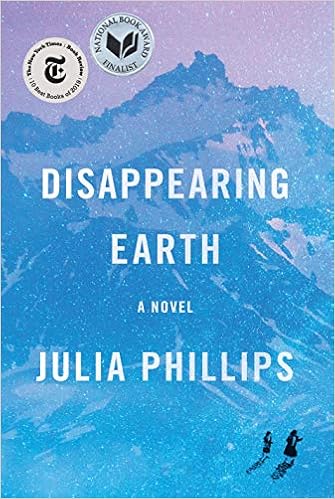I’ve not always been happy with fiction consisting of interconnected short stories, but this book uses the structure very effectively.
The book begins with the abduction of 11-year-old Alyona Golosovskaya
and her 8-year-old sister Sophia. Each
of the twelve subsequent chapters, which advance month by month in the year
after the girls’ disappearance, focuses on a different woman and her personal struggles. In several of these chapters, there is
discussion of Lilia, a teenaged girl who went missing years earlier and has
never been found.
The women’s struggles are various.
Some of the women’s lives are directly impacted by the case of the
missing girls. For instance, Olya loses her
best friend Diana because Diana’s mother doesn’t want her daughter spending time
with Olya who, like Alyona and Sophia, has an unsupervised life because her single
mother works all the time. And a
university student’s boyfriend insists on constant check-ins after the girls
are kidnapped. For other women, the
girls’ abduction is just a passing shadow as they contend with their own
problems. For example, women grapple
with sexuality, an unfaithful husband, a health scare, and the loss of a loved
one.
There are connections among some of the women. For example, one chapter focuses on Natasha,
Lilia’s sister, and another on Revmira who is Lilia’s mother’s second
cousin. The protagonist of one chapter
is Ksyusha, a university student, whereas the protagonist of another chapter is
Ksyusha’s brother’s girlfriend.
Sometimes women are protagonists in one chapter but also appear as minor
characters in another woman’s story:
Valentina, who works at Alyona and Sophia’s school, is featured in
November’s story but also appears in Olya’s September story and is mentioned in
the February chapter as well.
Men are very much secondary characters and most are not admirable. There’s a cheating husband and several absent
fathers. There’s the inept Max who
forgets to bring a tent on a camping trip and whose carelessness results in the
loss of a beloved dog. Denis is obsessed
with alien landings. Yevgeny Pavlovich,
the major general in charge of the police, seems clueless; one of his
detectives tells a woman, “’It’s Saturday night. The major general left work hours ago. . . .
He won’t be sober enough to assist you.’”
The one exception to the one-dimensional men is Chegga who is mentioned
prominently in two stories and appears in another; because he is shown from the
perspective of two women and then plays an active role in another’s story, he
has both positive and negative traits.
In some ways, this book is a locked room mystery. The events take place on Russia’s remote, far
eastern Kamchatka Peninsula: “the region
was cut off from the rest of the world by geography. To the south, east, and west was only
ocean. To the north, walling off the
Russian mainland, were hundreds of kilometers of mountains and tundra. Impassable.
Roads within Kamchatka were few and broken . . . No roads connected the
peninsula to the rest of the continent.”
The setting virtually becomes a character in the story. Because the peninsula was a closed military
zone until 1989, I knew little of the region so I was especially interested in
the culture of the Indigenous peoples.
For instance, Ksyusha comes from a reindeer-herding family and she spent
summers living in a yurt.
Tensions between white Russians and the Indigenous peoples come to the
forefront. Ksyusha won a university
scholarship but her classmates “spoke to her like she was part herd animal
herself.” One woman complains about the
only city on the peninsula being overrun with Natives: “’They used to stay in the villages where
they belong.’”
I was reminded of Canada’s missing and murdered Indigenous women when
it is made clear that the police and media give so much more attention to the
two missing white girls from the city than was given to Lilia, an Indigenous
girl from a remote community. Lilia’s
mother asks Alyona and Sophia’s mother: “’Tell
me, how did you influence [the police] to stay so active [in their search]? You paid them? . . . You must have paid them,
I think. . . . Otherwise, what reason would they have to continue? . . . I went
to the city police station in person.
They didn’t listen to me. But
they listen to you.’” The police “throw
all their efforts into looking for two small white bodies” and look for the “Russian
sisters tirelessly” yet when Lilia disappeared police “spread rumors about
Lilia’s boyfriends” and concluded she ran away.
Being the daughter of “an old native woman,” Lilia is “the child of a nobody”
so the police have no interest in continuing an investigation into her
disappearance.
This look at the lives of girls and women is not an easy read. Many of the main characters have few options in
their lives and more than a few experience trauma. Violence of one type or another is a common
element. Nonetheless, this book should
be added to to-read stacks. Though the
novel is set in a remote region of the world, the struggles it examines are universal. And there’s a mystery to be solved too!

No comments:
Post a Comment